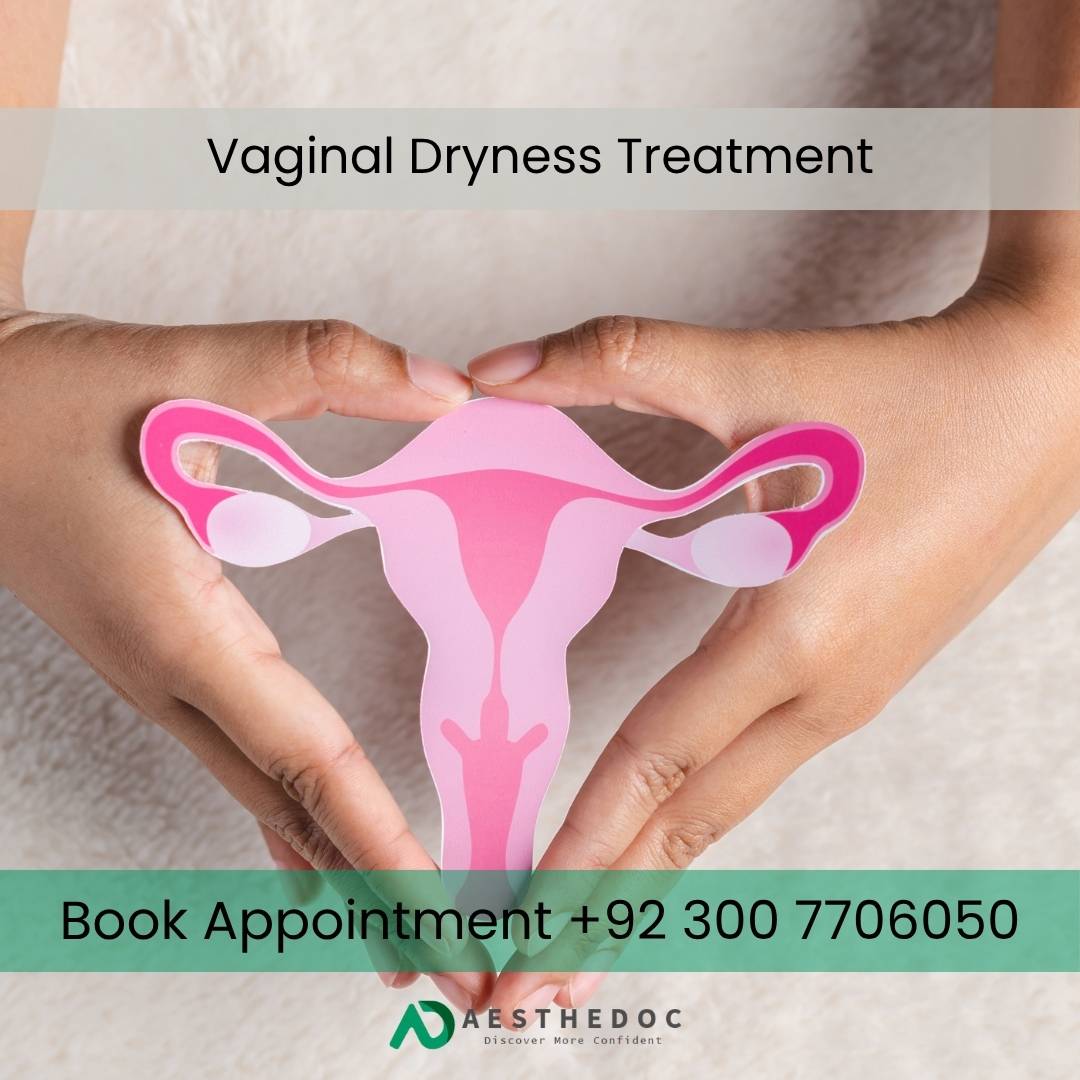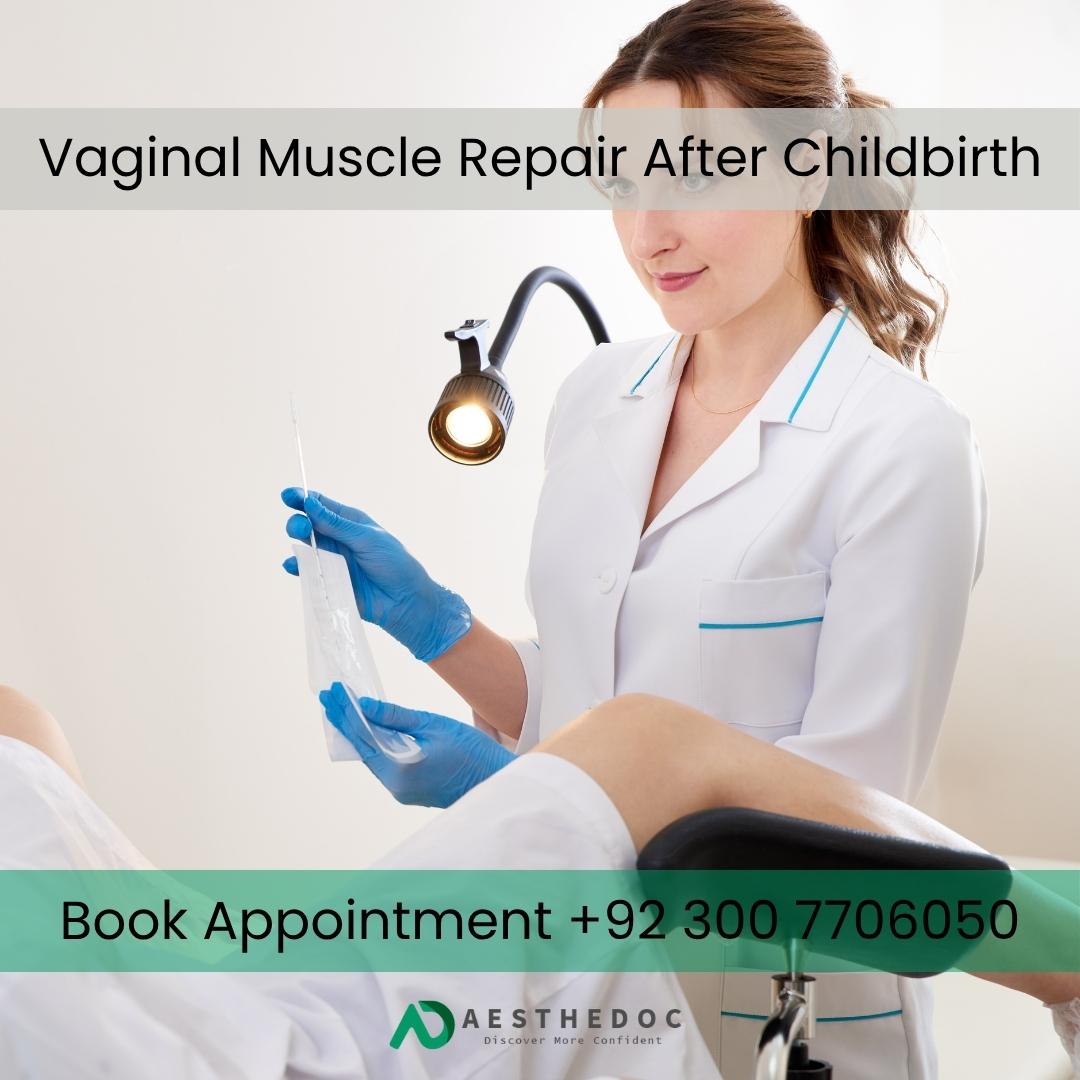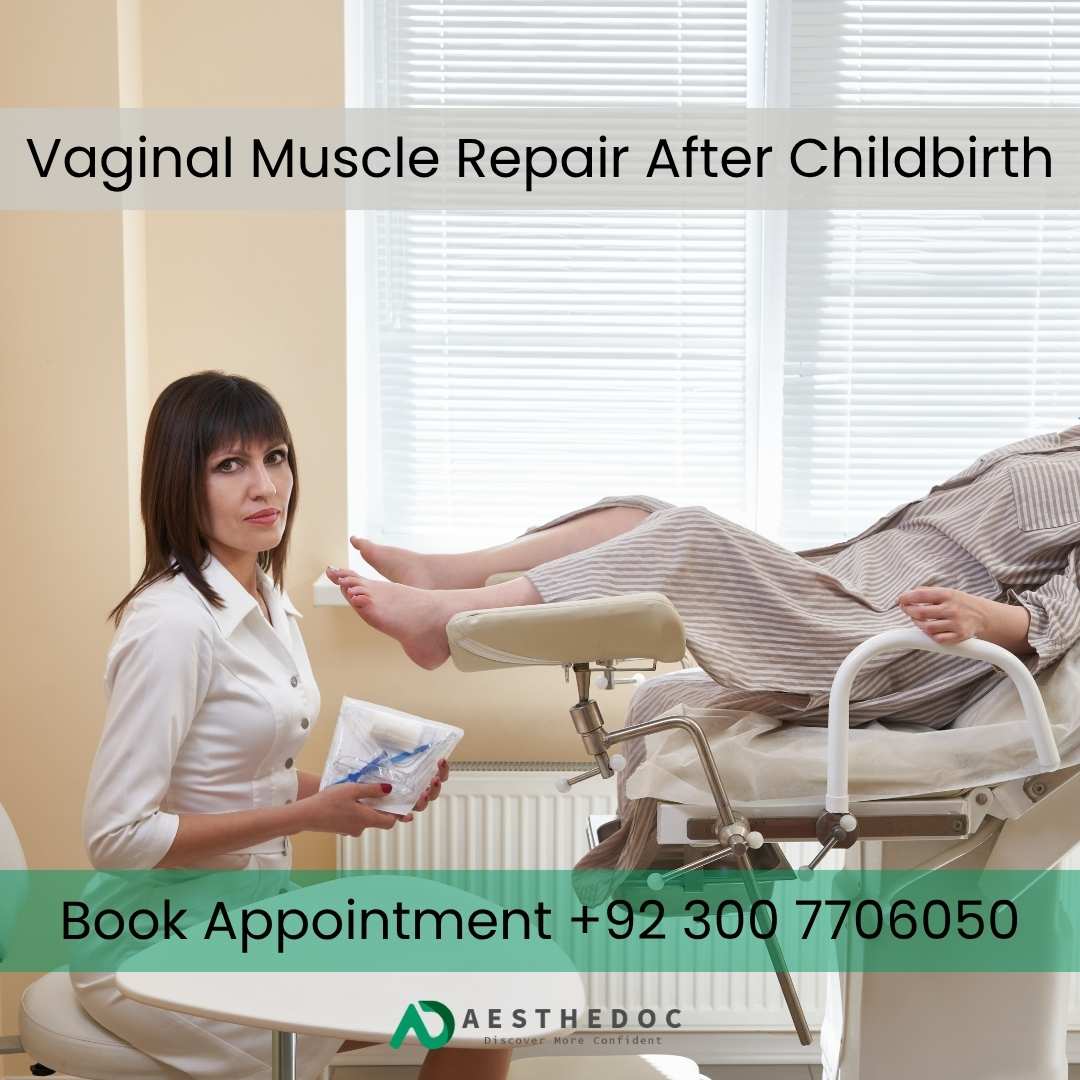Vaginal Rejuvenation
Designer Vagina Surgery

In today’s world, where women are embracing self-care and body confidence more than ever, designer vagina surgery has become one of the most talked-about aesthetic treatments. The procedure focuses on improving both the appearance and function of the vaginal area. For many women, it’s not just about beauty—it’s about comfort, confidence, and regaining control after childbirth, aging, or hormonal changes.
Also known as cosmetic gynecology, designer vagina surgery combines several advanced techniques such as labiaplasty, vaginoplasty, clitoral hood reduction, and perineoplasty, each designed to enhance the vaginal structure aesthetically and functionally.
What Is Designer Vagina Surgery?
Designer vagina surgery is an umbrella term that refers to one or more cosmetic and reconstructive procedures performed to reshape, tighten, or rejuvenate the female genital area.
The goal isn’t only to make the vaginal area look youthful and symmetrical, but also to improve comfort, intimacy, and personal well-being. It’s a customized surgery, meaning every woman’s treatment plan is different based on her goals, anatomy, and concerns.
Common Reasons Women Choose Designer Vagina Surgery
Every woman’s reason is deeply personal, but the most common include:
- Post-Childbirth Changes – Vaginal muscles may stretch, and the labia may lose tone after childbirth.
- Aging Effects – Reduced elasticity and collagen affect vaginal structure.
- Discomfort in Clothing or Exercise – Enlarged labia can cause irritation or pain during physical activity.
- Confidence and Intimacy – Many women desire to feel youthful and confident again.
- Aesthetic Preference – Some prefer a more symmetrical or refined appearance of the labia and vaginal opening.
Designer vagina surgery is about empowerment and comfort, not vanity—it helps women reclaim control over their bodies and confidence.
Procedures Included in Designer Vagina Surgery
1. Labiaplasty (Labia Reduction)
Labiaplasty is the most common component of designer vagina surgery. It involves reshaping or reducing the size of the labia minora (inner lips) or labia majora (outer lips).
- Removes excess tissue for a neater, balanced appearance.
- Reduces discomfort during sports or intimacy.
- Improves self-esteem and confidence.
Recovery: 1–2 weeks of rest, full healing within 4–6 weeks.
Results: Permanent reshaping, natural and symmetrical look.
2. Vaginoplasty (Vaginal Tightening Surgery)
Vaginoplasty focuses on tightening the internal vaginal canal that may have loosened due to childbirth or aging.
- Strengthens the pelvic floor muscles.
- Enhances sensitivity and friction during intercourse.
- Often combined with perineoplasty for full rejuvenation.
Procedure time: Around 1 hour.
Recovery: 4–6 weeks with minimal downtime.
3. Clitoral Hood Reduction
This delicate procedure removes excess skin around the clitoral hood, improving both appearance and sexual satisfaction. It’s often performed alongside labiaplasty for a complete rejuvenation.
- Increases comfort and sensitivity.
- Creates a refined, aesthetic balance.
- Usually done under local anesthesia.
4. Perineoplasty (External Muscle Repair)
Perineoplasty repairs the area between the vagina and anus (perineum) that may be stretched or torn during childbirth.
- Improves the look and feel of the vaginal opening.
- Enhances muscle control and sexual pleasure.
- Often paired with vaginoplasty for a complete functional restoration.
5. Monsplasty (Pubic Lift or Reduction)
This procedure contours the mons pubis, the fatty area above the pubic bone.
- Removes excess fat or sagging skin.
- Creates a smoother, youthful pelvic contour.
- Can be performed surgically or through liposuction.
Non-Surgical Options for Vaginal Rejuvenation
For women who prefer non-invasive treatments, several advanced options are available:
- Laser Vaginal Tightening – Stimulates collagen production for improved tone.
- Radiofrequency Therapy – Gently heats tissue to enhance elasticity.
- PRP Vaginal Rejuvenation (O-Shot) – Uses platelet-rich plasma to boost tissue healing and sensitivity.
- HIFU (High-Intensity Focused Ultrasound) – Tightens deep tissue layers for firmness and improved blood flow.
These treatments are effective for mild laxity or dryness, but surgical designer vagina procedures remain the gold standard for long-lasting results.
Benefits of Designer Vagina Surgery
Improved vaginal appearance and symmetry
Restored tightness and firmness
Enhanced sexual satisfaction
Increased comfort in clothing and physical activity
Relief from irritation or discomfort
Boosted self-confidence and emotional well-being
Who Is a Good Candidate?
You may be a suitable candidate for designer vagina surgery if you:
- Feel self-conscious about the appearance of your vaginal area
- Experience discomfort during intimacy or exercise
- Notice laxity or asymmetry after childbirth or aging
- Are in good general health and have realistic expectations
A private consultation with a qualified aesthetic gynecologist or cosmetic surgeon helps determine the best treatment combination for your needs.
The Surgical Process: Step-by-Step
- Initial Consultation – Assessment, medical history review, and goal setting.
- Pre-Operative Planning – Photography, measurements, and procedural planning.
- Anesthesia – Local or general anesthesia ensures complete comfort.
- Surgical Refinement – Tissue reshaping, tightening, and contouring as planned.
- Closure and Recovery – Absorbable sutures are used, with minimal scarring.
- Aftercare & Healing – Post-procedure check-ups to ensure smooth recovery.
The entire surgery typically takes 1 to 2 hours, and most women return to light activities within a few days.
Recovery and Aftercare
- Mild swelling or tenderness for the first week.
- Avoid strenuous exercise and intimacy for 4–6 weeks.
- Keep the area clean and dry; wear loose clothing.
- Use prescribed ointments to promote healing.
Full results are visible after 6–8 weeks, offering long-lasting improvements in both function and aesthetics.
Possible Risks and Complications
While designer vagina surgery is safe when performed by an expert, minor risks can include:
- Temporary numbness or swelling
- Mild scarring (usually fades over time)
- Infection (rare, preventable with antibiotics)
Choosing a qualified surgeon minimizes risks and ensures a natural, symmetrical outcome.
Designer Vagina Surgery Cost (Global Overview)
| Country | Estimated Cost Range |
|---|---|
| USA | $4,000 – $8,000 |
| UK | £3,000 – £6,000 |
| UAE | AED 12,000 – AED 20,000 |
| Pakistan | PKR 180,000 – PKR 400,000 |
The cost depends on:
- Type of procedures included
- Surgeon’s experience
- Anesthesia and facility standards
Psychological and Emotional Benefits
Beyond physical transformation, women often report:
- Renewed self-esteem and body positivity
- Greater satisfaction in relationships
- Emotional healing from postpartum or aging-related insecurities
Designer vagina surgery empowers women to reconnect with their bodies in a way that’s private, personal, and deeply liberating.
FAQs About Designer Vagina Surgery
Q1. Is designer vagina surgery painful?
No. The procedure is performed under anesthesia, ensuring complete comfort.
Q2. Can it be combined with other procedures?
Yes, many women combine it with tummy tuck, liposuction, or PRP treatments for full rejuvenation.
Q3. How long do results last?
Results are long-lasting and can be maintained with healthy habits and non-surgical follow-ups.
Q4. Does it affect natural functions?
No, the procedure does not interfere with menstruation, fertility, or urination.
Q5. When can I resume intimacy?
Usually after 6 weeks, once the healing is complete and your surgeon approves.
Where to Get Designer Vagina Surgery in Islamabad
If you’re considering designer vagina surgery or any form of intimate aesthetic enhancement, it’s essential to choose a trusted clinic with an experienced cosmetic surgeon specializing in female anatomy and rejuvenation.
Aesthedoc Clinic – F-7 Islamabad
Dr. Zara, a highly experienced cosmetic and aesthetic surgeon with over 15 years of expertise in cosmetic gynecology, performs advanced designer vagina, labiaplasty, vaginoplasty, and perineoplasty surgeries with precision and care.
Location: Aesthedoc Clinic, F-7 Islamabad
Specialties: Cosmetic gynecology, PRP rejuvenation, laser tightening, intimate aesthetics
Why Choose Aesthedoc: Privacy, professionalism, and personalized care in a safe, comfortable environment.
Dr. Zara and her team have helped hundreds of women regain their confidence, comfort, and feminine wellness through advanced aesthetic techniques.
Conclusion
Designer vagina surgery is not just about appearance—it’s about reclaiming your comfort, confidence, and control. Whether you’re healing from childbirth, aging changes, or personal insecurities, today’s advanced surgical options offer natural, lasting results.
With the expertise of Dr. Zara at Aesthedoc Clinic, Islamabad, you can achieve a balanced, youthful, and confident feminine transformation under the care of one of Pakistan’s leading cosmetic surgeons.
Blog
Vaginal Dryness Treatment

Vaginal dryness is one of the most common but often unspoken issues affecting millions of women worldwide. It can lead to discomfort, irritation, itching, pain during intimacy, and even emotional stress. Most women experience it after menopause, but it can occur at any age due to hormonal changes, childbirth, certain medications, or lifestyle factors.
Fortunately, modern medicine offers several effective treatments for vaginal dryness — ranging from natural remedies and topical therapies to advanced laser and PRP rejuvenation.
In this detailed guide, we’ll explore the causes, symptoms, and best vaginal dryness treatments available globally and in Islamabad, and how women can safely restore comfort, confidence, and natural lubrication.
What is Vaginal Dryness?
Vaginal dryness occurs when the vaginal tissues don’t produce enough natural moisture or lubrication. The vaginal walls become thin, less elastic, and more prone to friction or irritation.
It’s medically associated with vaginal atrophy or genitourinary syndrome of menopause (GSM) — a condition that happens when estrogen levels drop.
Common Causes of Vaginal Dryness
Understanding the root cause is essential for choosing the right treatment.
1. Hormonal Changes
- Menopause is the leading cause of vaginal dryness due to reduced estrogen.
- Postpartum and breastfeeding women may also experience hormonal dips.
- Surgical removal of ovaries or certain cancer treatments can trigger early dryness.
2. Medications
Antihistamines, antidepressants, contraceptive pills, and certain acne medications can reduce vaginal moisture.
3. Stress and Anxiety
Chronic stress affects hormonal balance, leading to lower lubrication.
4. Autoimmune Disorders
Conditions like Sjögren’s syndrome directly affect the body’s moisture-producing glands.
5. Lifestyle Factors
- Smoking
- Lack of hydration
- Overuse of chemical-based soaps, douches, or scented hygiene products
- Low sexual activity
Signs and Symptoms of Vaginal Dryness
Women may experience one or more of the following:
- Vaginal itching or burning
- Pain during intercourse (dyspareunia)
- Frequent urinary tract infections
- Minor bleeding after intimacy
- Tightness or discomfort
- Loss of sexual desire due to pain or anxiety
Early diagnosis and proper treatment can significantly improve both physical comfort and emotional well-being.
How is Vaginal Dryness Diagnosed?
A gynecologist or aesthetic physician evaluates the cause through:
- Medical history review (menstrual, sexual, and medication background)
- Physical or pelvic examination to assess tissue health
- Hormonal testing (estrogen, FSH, LH levels if needed)
Diagnosis helps in deciding whether the dryness is hormonal, post-delivery related, or due to lifestyle factors.
Best Vaginal Dryness Treatments
There are several treatment options depending on severity — from simple lubricants to advanced regenerative procedures.
1. Over-the-Counter (OTC) Vaginal Moisturizers & Lubricants
For mild cases, regular use of vaginal moisturizers (like Replens or Hyalo Gyn) helps maintain moisture.
- Lubricants (water or silicone-based) reduce friction during intimacy.
- Avoid products with fragrances or glycerin to prevent irritation.
Pros: Easily available, affordable
Cons: Temporary relief; not a cure for hormonal dryness
2. Hormonal Therapy
a. Topical Estrogen Creams
Estrogen creams or vaginal tablets (e.g., Vagifem, Estrace) restore tissue thickness and moisture naturally.
b. Systemic Hormone Therapy
For menopausal women, HRT (Hormone Replacement Therapy) can balance estrogen levels throughout the body.
Pros: Proven long-term relief
Cons: Not suitable for women with certain cancer histories or clotting disorders
3. Non-Hormonal Prescription Treatments
For those who cannot take hormones:
- Ospemifene (Osphena): An oral SERM (Selective Estrogen Receptor Modulator) that mimics estrogen in vaginal tissue.
- DHEA (Prasterone): A vaginal insert that naturally increases local hormone levels.
4. Laser Vaginal Rejuvenation (CO₂ or Er:YAG Laser)
One of the most advanced non-surgical treatments for vaginal dryness is laser vaginal rejuvenation.
This procedure uses fractional CO₂ or Erbium laser energy to gently heat vaginal tissue and stimulate collagen, elastin, and natural moisture production.
How It Works:
- A specialized laser probe is inserted into the vaginal canal.
- Controlled laser energy triggers cellular regeneration.
- It increases blood flow and lubrication naturally.
Benefits:
- Non-surgical & pain-free
- Restores tightness and elasticity
- Improves natural lubrication
- Zero downtime — patients resume normal activity the same day
Sessions Needed:
Typically, 2–3 sessions spaced one month apart.
5. PRP (Platelet-Rich Plasma) Vaginal Rejuvenation
PRP therapy uses your own blood’s growth factors to restore vaginal tissue vitality.
- A small amount of blood is drawn and centrifuged to extract plasma.
- This plasma is injected into targeted areas to enhance collagen production, blood circulation, and moisture.
Benefits:
- Natural, hormone-free solution
- Improves lubrication and sensation
- Boosts confidence and sexual satisfaction
6. Radiofrequency (RF) Vaginal Tightening & Moisture Therapy
RF devices (like ThermiVa or Votiva) use gentle heat to tighten and hydrate vaginal tissue.
It promotes collagen remodeling and increases local circulation, improving both dryness and laxity.
Benefits:
- Comfortable, non-invasive
- No anesthesia or recovery time
- Long-lasting results with maintenance sessions
7. Lifestyle Modifications
- Stay well-hydrated
- Avoid scented soaps and douches
- Eat foods rich in omega-3s and phytoestrogens (flaxseed, soy, fish)
- Engage in regular sexual activity to maintain tissue elasticity
- Manage stress through yoga or relaxation techniques
Comparing Major Vaginal Dryness Treatments
| Treatment Type | Invasiveness | Duration of Results | Suitable For |
|---|---|---|---|
| OTC Lubricants | None | Temporary | Mild cases |
| Hormonal Creams | Minimal | 3–6 months | Postmenopausal dryness |
| Laser Rejuvenation | Non-surgical | 1–2 years | Moderate to severe dryness |
| PRP Therapy | Minimally invasive | 1 year+ | Hormone-sensitive women |
| RF Therapy | Non-surgical | 8–12 months | General dryness & laxity |
Vaginal Dryness After Menopause
After menopause, up to 60% of women experience chronic dryness.
Estrogen therapy combined with laser or PRP treatments provides the best long-term outcomes.
Non-hormonal approaches like laser and PRP are especially beneficial for women who cannot undergo HRT due to medical reasons.
Vaginal Dryness After Childbirth
Many women face vaginal dryness post-delivery due to hormonal changes and breastfeeding.
Gentle laser or PRP therapy helps restore hydration and comfort naturally, without affecting breastfeeding.
When to See a Doctor
You should consult a qualified aesthetic gynecologist or cosmetic doctor if:
- OTC moisturizers are ineffective
- Pain persists during intercourse
- You experience frequent irritation or infections
- Menopause or medications trigger long-term dryness
Prevention Tips
- Use pH-balanced intimate washes
- Avoid hot baths and harsh detergents
- Drink plenty of water daily
- Maintain a balanced diet with estrogen-boosting foods
- Consider regular medical checkups after age 40
Psychological and Emotional Impact
Vaginal dryness doesn’t only affect the body — it can influence self-esteem, relationships, and overall quality of life.
Addressing it early helps women regain comfort, intimacy, and emotional confidence.
Why Choose Aesthedoc Clinic Islamabad for Vaginal Dryness Treatment
At Aesthedoc Clinic, located in F-7 Islamabad, Dr. Zara offers advanced, science-backed solutions for vaginal dryness and rejuvenation.
With over 15 years of experience in aesthetic and cosmetic gynecology, Dr. Zara combines medical expertise with cutting-edge technology like CO₂ laser, PRP rejuvenation, and radiofrequency therapy to deliver safe and lasting results.
Whether dryness is due to menopause, childbirth, or hormonal imbalance, Aesthedoc Clinic provides personalized, confidential, and comfortable care designed to restore your feminine wellness naturally.
Conclusion
Vaginal dryness is a common but treatable condition that no woman should ignore.
From hormonal therapy to advanced laser and PRP treatments, modern medicine offers effective and long-lasting relief.
If you’re seeking professional care in Islamabad, visit Aesthedoc Clinic, F-7, where Dr. Zara provides expert, compassionate, and discreet treatments tailored to your needs — helping you restore comfort, confidence, and feminine vitality.
Vaginal Rejuvenation
Surgical Vaginal Muscles Repair After Childbirth

When natural remedies like Kegel exercises or laser tightening fail to restore vaginal tone and support, a surgical procedure becomes the most effective and lasting option. Surgical vaginal muscle repair, medically known as vaginoplasty or perineoplasty, reconstructs and tightens the stretched vaginal walls and muscles that have been weakened during childbirth.
The goal is not only to enhance tightness but also to restore pelvic floor strength, improve comfort during intimacy, and boost confidence. It’s a delicate yet transformative cosmetic-gynecologic procedure performed by a skilled surgeon specializing in female intimate health.
Types of Surgical Vaginal Muscle Repair
- Vaginoplasty (Full Vaginal Tightening)
- Focuses on tightening the vaginal canal and internal muscles.
- The surgeon removes excess vaginal lining and brings together separated muscles using fine sutures.
- Commonly done under local or general anesthesia.
- Recovery takes about 4–6 weeks.
- Perineoplasty (External Muscle Repair)
- Repairs the perineum, the area between the vaginal opening and anus.
- Often combined with vaginoplasty to restore both internal and external structure.
- Helps with mild cases of vaginal laxity and improves external appearance.
- Combined Vaginoplasty + Perineoplasty
- Offers comprehensive repair for women who’ve had multiple deliveries.
- Strengthens both deep and surface muscle layers.
- Ensures lasting results with improved aesthetic and functional outcomes.
Step-by-Step Procedure: What Happens During Surgery
- Consultation & Examination
- A detailed medical evaluation is performed.
- The surgeon assesses the level of laxity, tissue damage, and expectations.
- Pre-operative blood tests and gynecological exams are usually recommended.
- Anesthesia Administration
- Depending on the case, local anesthesia with sedation or general anesthesia is administered.
- The patient remains comfortable throughout the procedure.
- Muscle Tightening and Tissue Adjustment
- The surgeon carefully identifies and brings together stretched vaginal muscles.
- Excess mucosa (lining tissue) is trimmed.
- Fine absorbable stitches are placed to reshape the vaginal canal.
- Reconstruction of the Perineal Area
- If required, the external muscles and tissues near the vaginal opening are reshaped.
- This ensures a smoother, firmer, and more youthful appearance.
- Closure and Dressing
- The incision is closed with dissolvable sutures.
- The patient can usually go home the same day or after a short observation period.
Recovery Phase: What to Expect
Recovering from vaginal muscle repair surgery is relatively quick and comfortable when post-care instructions are followed properly.
Week 1–2: Early Recovery
- Mild swelling and soreness are normal.
- Ice packs and prescribed pain relief help minimize discomfort.
- Avoid heavy lifting and strenuous activity.
Week 3–4: Healing Period
- Stitches begin to dissolve naturally.
- Walking is encouraged for circulation.
- Keep the surgical site dry and clean.
Week 5–6: Return to Normal Routine
- Sexual activity and exercise can usually resume after the 6th week, upon the doctor’s approval.
- Most patients experience noticeably improved tightness and satisfaction.
Benefits of Vaginal Muscle Repair Surgery
Enhanced muscle strength and vaginal tone
Better control and support of pelvic organs
Improved sexual satisfaction and confidence
Correction of vaginal bulging or looseness
Relief from discomfort during intimacy or exercise
Younger and firmer vaginal appearance
This procedure is both restorative and rejuvenating, giving women a sense of comfort and control that may have been lost after childbirth.
Potential Risks and Safety
All surgical procedures carry some level of risk, although complications are rare when performed by an experienced cosmetic gynecologist.
Possible side effects may include:
- Temporary swelling or mild bruising
- Infection (preventable with antibiotics)
- Slight numbness that usually fades in a few weeks
- Rarely, tightness beyond expectation (correctable)
At advanced aesthetic gynecology centers, these risks are minimized through sterile protocols, precision techniques, and expert surgical planning.
Alternative and Complementary Treatments
For women hesitant about surgery or those with mild muscle loosening, non-surgical treatments can provide excellent results:
- Laser Vaginal Tightening – Stimulates collagen and elastin fibers to naturally firm the vaginal tissue.
- Radiofrequency Therapy – Uses thermal energy to rebuild tissue structure.
- PRP (Platelet-Rich Plasma) Therapy – Regenerates vaginal tissue using growth factors from the patient’s own blood.
- Kegel and Pelvic Floor Exercises – Effective for mild laxity and preventive care.
These methods can also be used post-surgery to maintain long-term muscle strength and tone.
Who Is a Suitable Candidate for Vaginal Muscle Repair?
You may be a good candidate if you experience:
- Vaginal looseness after one or more vaginal deliveries
- Decreased friction or sensation during intercourse
- Pelvic floor weakness or mild urinary leakage
- Loss of vaginal tone despite Kegel exercises
- Emotional distress or low confidence due to changes after childbirth
Consultation with a qualified aesthetic gynecologist ensures a personalized plan that meets your physical and emotional needs.
Vaginal Muscle Repair vs. Vaginoplasty vs. Perineoplasty
| Procedure Type | Area Targeted | Purpose | Recovery |
|---|---|---|---|
| Vaginal Muscle Repair (Vaginoplasty) | Internal muscles | Tightening & functional restoration | 4–6 weeks |
| Perineoplasty | External opening (perineum) | Appearance + mild tightening | 2–4 weeks |
| Combined Surgery | Internal & external | Comprehensive rejuvenation | 6 weeks |
Global Perspective: Vaginal Muscle Repair Around the World
The demand for vaginal rejuvenation and repair surgeries has increased by over 45% worldwide in the last decade.
Women across the USA, UK, UAE, and Pakistan now seek specialized clinics offering both medical-grade safety and aesthetic enhancement.
Countries like Turkey, Thailand, and the UAE are recognized for their medical tourism packages.
In Pakistan, especially Islamabad and Karachi, top-tier clinics now offer the same level of technology and expertise — at more affordable costs.
Emotional and Psychological Benefits
Beyond the physical improvements, this procedure can significantly impact a woman’s mental well-being.
Many patients report:
- Increased self-esteem
- Renewed intimacy and relationship satisfaction
- Relief from postpartum distress related to body image
Postpartum body restoration is not just about beauty — it’s about healing confidence and reclaiming comfort.
Cost of Vaginal Muscle Repair (Global Overview)
| Country | Average Cost Range (USD) |
|---|---|
| USA | $4,000 – $7,000 |
| UK | £3,000 – £5,000 |
| UAE | AED 10,000 – AED 18,000 |
| Pakistan | PKR 150,000 – PKR 350,000 |
Cost may vary based on:
- Surgeon’s expertise
- Type of anesthesia
- Combined procedures (vaginoplasty + perineoplasty)
- Facility standards
FAQs About Vaginal Muscle Repair After Childbirth
Q1. How long does the surgery take?
Usually between 60 to 90 minutes.
Q2. Is it painful?
No, local or general anesthesia ensures a painless procedure. Mild discomfort after surgery is easily managed with medication.
Q3. How soon can I return to work?
Most women return to desk work within 4–5 days.
Q4. Are the results permanent?
Results are long-lasting, especially if no further vaginal childbirth occurs.
Q5. Can I have another baby after the surgery?
Yes, but it may reverse some of the tightening effects. Doctors usually recommend the procedure after completing childbirth.
Where to Get the Best Vaginal Muscle Repair After Childbirth
If you are considering vaginal tightening or muscle repair surgery after childbirth, it’s essential to choose a qualified aesthetic gynecology expert with proven experience.
In Islamabad, one of the most trusted names in women’s intimate wellness and surgical aesthetics is:
Aesthedoc Clinic – Islamabad
Led by Dr. Zara, a renowned cosmetic and aesthetic surgeon with over 15 years of experience in advanced female cosmetic procedures, including vaginoplasty, perineoplasty, and vaginal muscle repair.
Clinic Location: F-7, Islamabad
Specialization: Cosmetic Gynecology, Vaginal Rejuvenation, PRP, Laser Tightening
Consultation: Personalized assessments, privacy, and expert aftercare.
Dr. Zara and her team at Aesthedoc Clinic ensure world-class safety standards and natural results — helping women regain their comfort, confidence, and femininity after childbirth.
Blog
Vaginal Muscle Repair After Childbirth

Childbirth is one of the most beautiful and transformative experiences in a woman’s life — but it also brings profound physical changes. Among the most common concerns new mothers face after a vaginal delivery is loosened vaginal muscles or a loss of vaginal tightness. This condition, medically known as vaginal laxity, occurs when the vaginal canal and surrounding tissues stretch beyond their normal capacity during childbirth and do not fully regain their original tone.
While this change is natural, it can affect a woman’s confidence, comfort, and even intimacy. Many women around the world, from the United States to the Middle East, Europe, and South Asia, seek safe and effective ways to repair and strengthen vaginal muscles after giving birth. Thanks to modern gynecological advancements, there are now both non-surgical and surgical treatments available that can restore vaginal tone, improve comfort, and enhance quality of life.
Understanding Vaginal Muscle Loosening After Childbirth
The Anatomy of the Vaginal Muscles
The vagina is supported by a complex network of muscles, ligaments, and connective tissues collectively called the pelvic floor. These muscles act like a hammock, holding the bladder, uterus, and rectum in place while maintaining vaginal tightness and control.
During vaginal childbirth, these muscles stretch significantly to allow the baby to pass through the birth canal. Although this is a natural process, it can sometimes result in overstretching, tearing, or weakening of the muscles and surrounding tissues.
What Causes Vaginal Muscle Loosening After Childbirth?
- Vaginal Delivery Trauma
The process of pushing during delivery can overstretch or tear the perineal and vaginal muscles, especially if the baby is large or the labor is prolonged. - Multiple Childbirths
Each vaginal birth puts stress on the same set of muscles. Over time, they lose elasticity and natural tone. - Episiotomy or Tearing
A surgical cut (episiotomy) or natural tear during delivery can affect the alignment and strength of vaginal tissues if not healed properly. - Hormonal Changes
After childbirth, hormonal fluctuations — especially reduced estrogen — can cause the vaginal walls to become thinner and less elastic. - Aging and Lifestyle
With age, pelvic muscles naturally lose some firmness. Lack of exercise, obesity, and chronic coughing can also weaken the pelvic floor.
Common Symptoms of Vaginal Muscle Loosening
- Reduced vaginal tightness or tone
- A feeling of “heaviness” or “looseness” in the pelvic area
- Decreased sensation during sexual intercourse
- Mild urinary leakage when coughing, sneezing, or exercising
- Visible bulging of vaginal tissue (mild prolapse)
- Emotional discomfort or loss of confidence
If these symptoms sound familiar, you’re not alone. Studies show that up to 40% of women experience some degree of vaginal laxity after childbirth. The good news: it can be effectively treated.
Emotional and Relationship Impact
The effects of childbirth are not only physical — they can be deeply emotional. Many women feel hesitant to discuss postpartum changes with their partners or doctors, fearing embarrassment or judgment.
However, modern medicine views postpartum recovery holistically. Repairing vaginal muscles can restore confidence, comfort, and intimacy, strengthening both physical and emotional wellbeing.
Non-Surgical Vaginal Muscle Repair Options
For mild to moderate cases, non-surgical options can be effective in restoring muscle tone and function. Let’s look at the most widely recommended and clinically proven treatments available globally.
1. Pelvic Floor Exercises (Kegel Exercises)
Kegel exercises are the simplest, most accessible way to strengthen the vaginal and pelvic floor muscles. They involve repeatedly contracting and relaxing the muscles that control urination.
How to perform Kegels:
- Identify your pelvic floor muscles by stopping urination midstream.
- Contract these muscles for 5 seconds, then relax for 5 seconds.
- Repeat 10–15 times, three times daily.
Benefits:
- Improves muscle tone naturally
- Enhances bladder control
- Boosts sexual satisfaction
- No side effects or cost
Limitations:
Results take time (8–12 weeks), and effectiveness depends on consistency and severity of laxity.
2. Vaginal Laser Tightening (Non-Surgical Vaginal Rejuvenation)
One of the most popular medical advancements in postpartum care is laser vaginal tightening. It uses controlled thermal energy to stimulate collagen production in vaginal tissues, improving elasticity and tone without surgery.
Popular technologies include:
- CO₂ fractional laser
- Er:YAG laser
- Radiofrequency (RF) vaginal tightening
Benefits:
- Non-invasive and pain-free
- No downtime — you can return to normal activity immediately
- Improves lubrication, elasticity, and mild urinary leakage
- Global popularity in aesthetic gynecology clinics
Limitations:
Requires multiple sessions (3–5), and effects may last 1–2 years depending on maintenance.
3. PRP Vaginal Rejuvenation (Platelet-Rich Plasma Therapy)
PRP, also known as the “O-shot,” involves drawing a small amount of your blood, processing it to extract platelet-rich plasma, and injecting it into the vaginal area to promote healing, tightening, and rejuvenation.
Benefits:
- 100% natural (uses your own blood)
- Improves tissue regeneration and blood flow
- Enhances sensitivity and lubrication
Limitations:
Not a substitute for surgical repair; best for mild cases or as a complementary treatment after childbirth.
4. Vaginal Electrical Stimulation (EMS Therapy)
In some advanced physiotherapy clinics, electrical muscle stimulation is used to contract and tone pelvic floor muscles using mild electrical pulses.
It helps women who struggle to perform Kegels effectively on their own.
Results: noticeable improvement after several weeks of consistent sessions.
5. Hormonal and Topical Treatment
Postpartum estrogen levels drop significantly, affecting vaginal tissue health. Some gynecologists recommend topical estrogen creams or vaginal tablets to restore moisture and elasticity.
These are safe for non-breastfeeding mothers and can complement other strengthening therapies.
When Non-Surgical Treatments Are Not Enough
If vaginal muscles are severely stretched, or if there’s visible perineal damage or vaginal wall laxity, non-surgical methods might not provide full results. In such cases, surgical vaginal repair — such as vaginoplasty or perineoplasty — is the most effective and permanent solution.
-

 Vaginal Tightening2 years ago
Vaginal Tightening2 years agoVaginal Tightening HIFU Treatment
-

 Hymen Reconstruction Surgery2 years ago
Hymen Reconstruction Surgery2 years agoCandidates For Hymen Repair, Symptoms, Causes, Treatment & Cost
-

 Hymenoplasty2 years ago
Hymenoplasty2 years agoHymenoplasty Surgical Repair in Pakistan
-

 Hymen Reconstruction Surgery2 years ago
Hymen Reconstruction Surgery2 years agoHymenoplasty Surgery in UAE, Dubai’s Expertise in Hymenoplasty
-

 Hymenoplasty2 years ago
Hymenoplasty2 years agoHymenoplasty in Rawalpindi, Hymen Repair Surgery
-

 Vaginal Rejuvenation2 years ago
Vaginal Rejuvenation2 years agoVaginal Rejuvenation Non Surgical, Rawalpindi & Lahore
-

 Labiaplasty2 years ago
Labiaplasty2 years agoExpert Labiaplasty Surgery in Turkey, Labiaplasty Cost in Turkey
-

 Hymen Reconstruction Surgery2 years ago
Hymen Reconstruction Surgery2 years agoHymenoplasty Surgeon in Rawalpindi, Hymen Repair Aesthedoc Clinic


